Lincoln made a bold move in switching to unitary construction for the 1958 models, but the result was somewhat underwhelming. The largest Lincolns to date and the hugest unibody cars ever, they came across as perpendicularly sculpted, competitive at first but decidedly dated by 1960. The new, clean design for 1961 started out as a Thunderbird concept. Styling veep George Walker wanted it, so chief stylist Elwood Engel rounded up a team that eventually included John Najjar, Bob Thomas, Joe Oros, John Orff and Colin Neale. Reflecting on criticism of the earlier cars, Engel told Najjar “I want a clean car – no garbage.” A clean car is what he got, created around a Thunderbird cowl. But it was Robert McNamara, Ford general manager and soon to become company president, who suggested it become a four-door Lincoln Continental. This caused quite a stir, since an evolutionary Lincoln, based on the 1958-60 design, was already in process. But Engel’s design prevailed, and went into production in November 1960. The Industrial Design Institute awarded it a coveted Bronze Medal, rare for an automobile. A full 15 inches shorter than its predecessor (and 10 and 15 inches shorter, respectively, than ’61 Cadillacs and Imperials), the new Continental was designed for ease of passenger entry: the lack of a wrap-around windshield and use of aft-hinged “suicide” rear doors aided in this. And truly novel for the time was a four-door convertible body style, the first since the faltering Frazer Manhattan of 1951. Design changes over the first three years were minimal. A 1964 freshening restyled the tail end, but also changed the curved side glass to flat panes, which saved money. In order to provide more rear legroom, the wheelbase was stretched three inches to 126. Front disk brakes were made standard in 1965, and 1966 brought a new skin, with new contours and a sculpted accent line down the side. The curved glass returned. The design continued in production through 1969, but the convertibles were discontinued after 1967. These are sometimes called “Kennedy Lincolns,” since several were adopted for the White House fleet and one of them became heartbreakingly famous in Dallas during November 1963. Some, however, prefer to remember the image of President Johnson leading cars of the intrepid press corps, in a car very much like this one, at astronomical speeds on the LBJ Ranch. This 1966 Lincoln Continental convertible is gorgeous in Arctic White with striking red vinyl interior. Built in Ford’s Thunderbird-Lincoln plant at Wixom, Michigan, it is powered by a 340 bhp, 462 cubic inch V8, the largest iteration of the MEL engine family introduced in 1958. Condition throughout the car is exceptionally clean, the interior showing little wear, the paint is good and of utmost importance the electric top mechanism and power windows were all working when tested during our catalog photography/inspection. Unquestionably one of the most distinctive designs of its day, this is a fine example.
Lincoln made a bold move in switching to unitary construction for the 1958 models, but the result was somewhat underwhelming. The largest Lincolns to date and the hugest unibody cars ever, they came across as perpendicularly sculpted, competitive at first but decidedly dated by 1960. The new, clean design for 1961 started out as a Thunderbird concept. Styling veep George Walker wanted it, so chief stylist Elwood Engel rounded up a team that eventually included John Najjar, Bob Thomas, Joe Oros, John Orff and Colin Neale. Reflecting on criticism of the earlier cars, Engel told Najjar “I want a clean car – no garbage.” A clean car is what he got, created around a Thunderbird cowl. But it was Robert McNamara, Ford general manager and soon to become company president, who suggested it become a four-door Lincoln Continental. This caused quite a stir, since an evolutionary Lincoln, based on the 1958-60 design, was already in process. But Engel’s design prevailed, and went into production in November 1960. The Industrial Design Institute awarded it a coveted Bronze Medal, rare for an automobile. A full 15 inches shorter than its predecessor (and 10 and 15 inches shorter, respectively, than ’61 Cadillacs and Imperials), the new Continental was designed for ease of passenger entry: the lack of a wrap-around windshield and use of aft-hinged “suicide” rear doors aided in this. And truly novel for the time was a four-door convertible body style, the first since the faltering Frazer Manhattan of 1951. Design changes over the first three years were minimal. A 1964 freshening restyled the tail end, but also changed the curved side glass to flat panes, which saved money. In order to provide more rear legroom, the wheelbase was stretched three inches to 126. Front disk brakes were made standard in 1965, and 1966 brought a new skin, with new contours and a sculpted accent line down the side. The curved glass returned. The design continued in production through 1969, but the convertibles were discontinued after 1967. These are sometimes called “Kennedy Lincolns,” since several were adopted for the White House fleet and one of them became heartbreakingly famous in Dallas during November 1963. Some, however, prefer to remember the image of President Johnson leading cars of the intrepid press corps, in a car very much like this one, at astronomical speeds on the LBJ Ranch. This 1966 Lincoln Continental convertible is gorgeous in Arctic White with striking red vinyl interior. Built in Ford’s Thunderbird-Lincoln plant at Wixom, Michigan, it is powered by a 340 bhp, 462 cubic inch V8, the largest iteration of the MEL engine family introduced in 1958. Condition throughout the car is exceptionally clean, the interior showing little wear, the paint is good and of utmost importance the electric top mechanism and power windows were all working when tested during our catalog photography/inspection. Unquestionably one of the most distinctive designs of its day, this is a fine example.
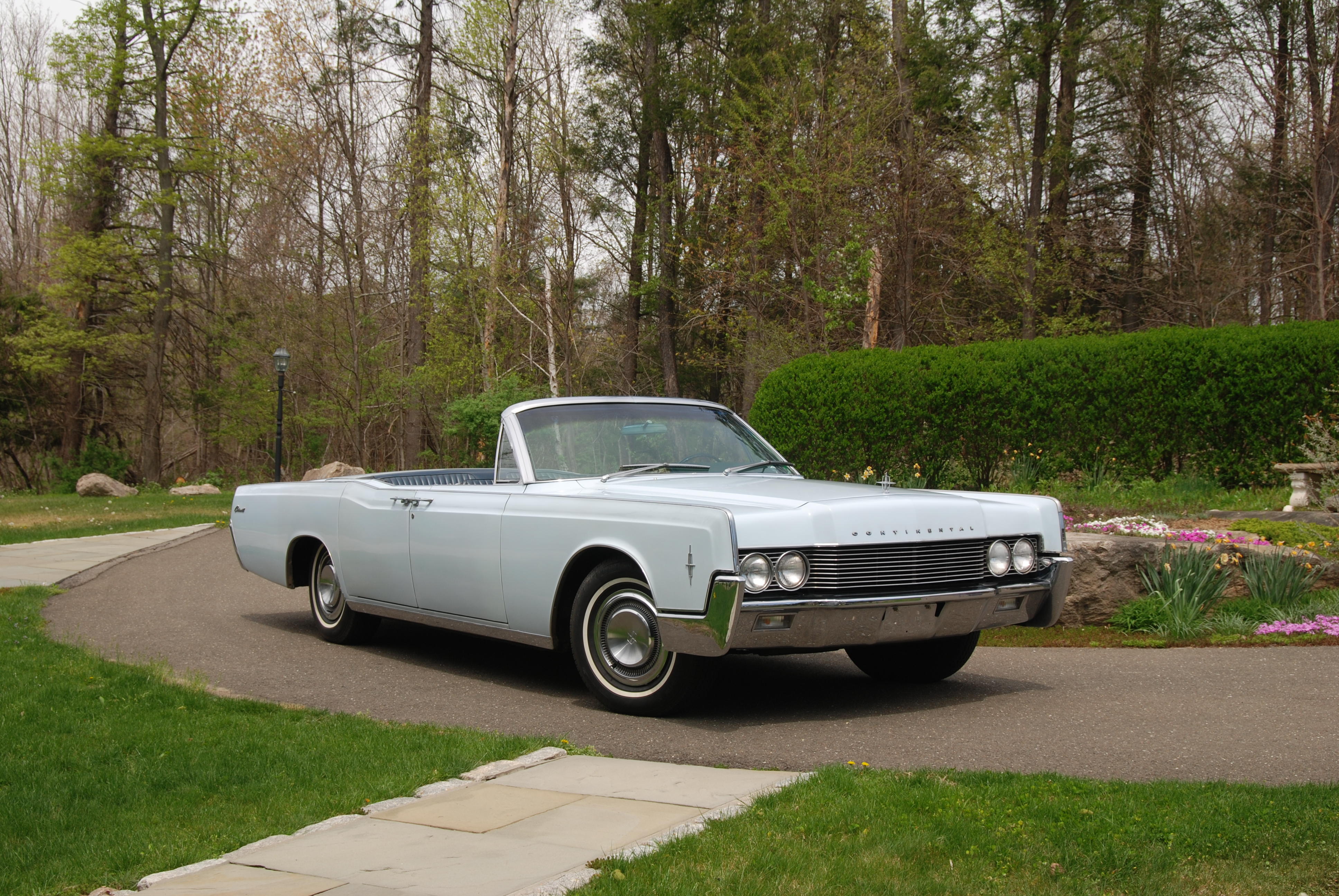
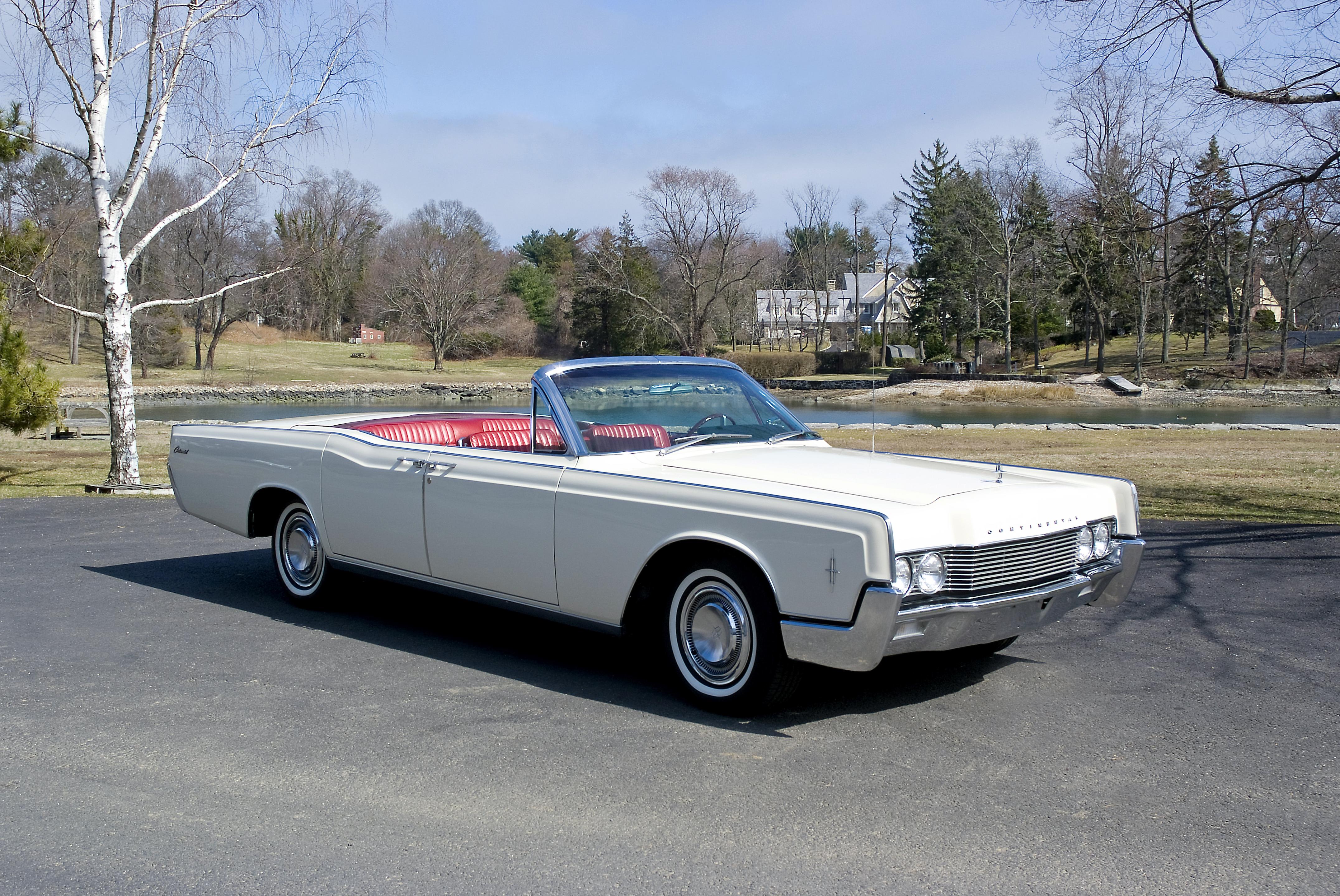
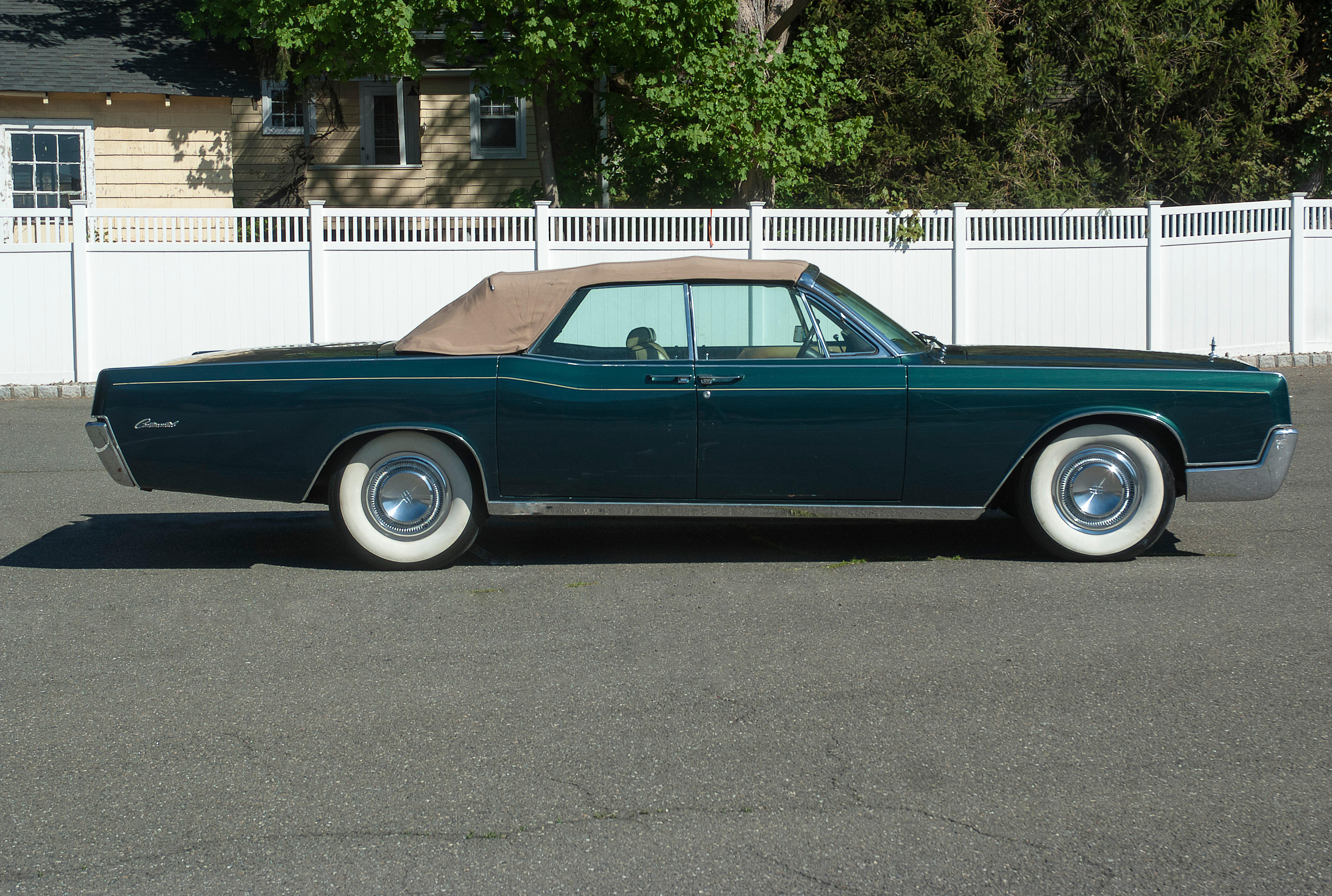
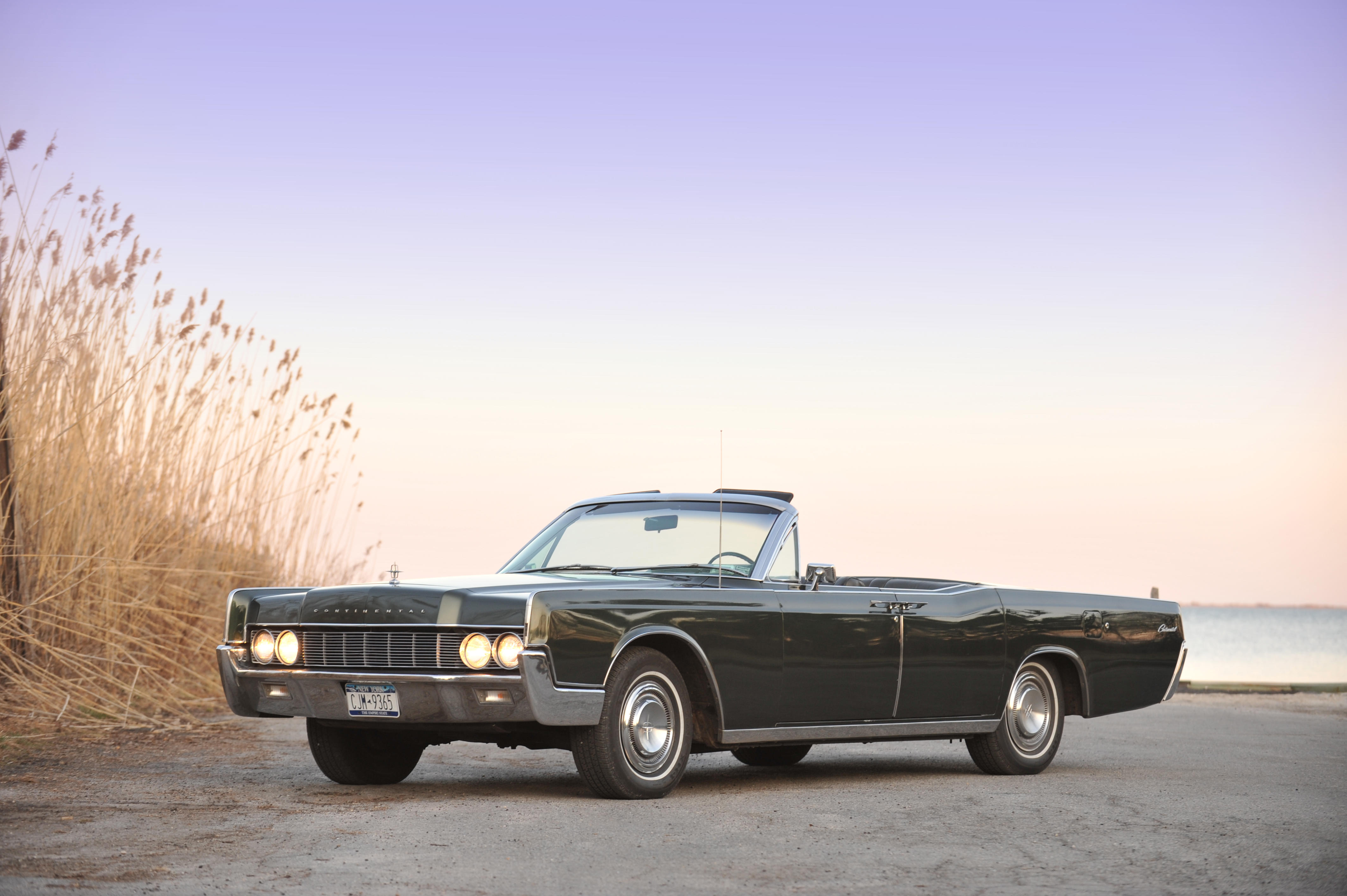
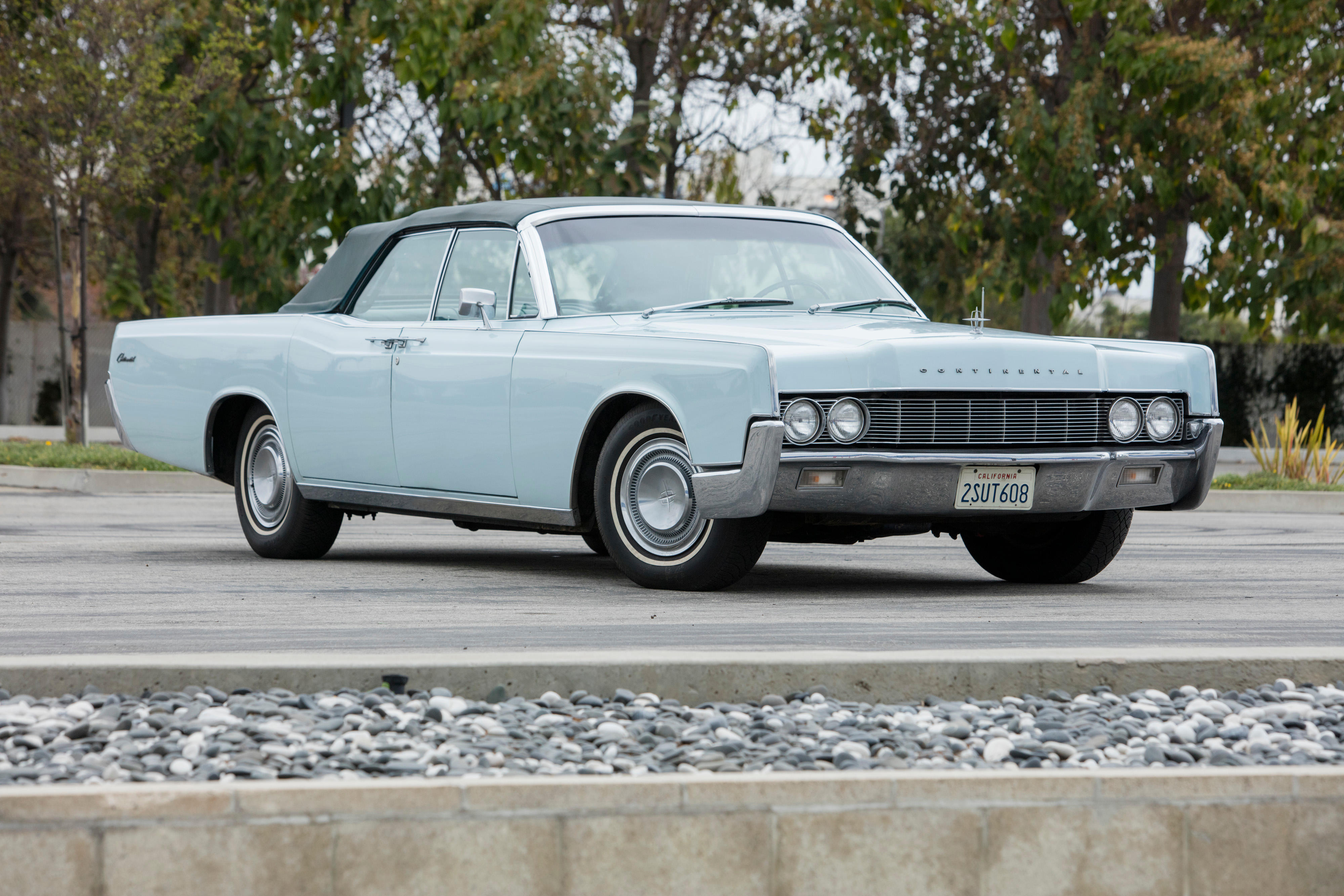


Testen Sie LotSearch und seine Premium-Features 7 Tage - ohne Kosten!
Lassen Sie sich automatisch über neue Objekte in kommenden Auktionen benachrichtigen.
Suchauftrag anlegen